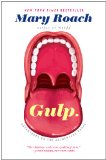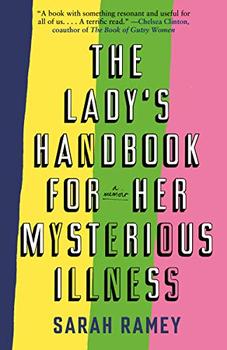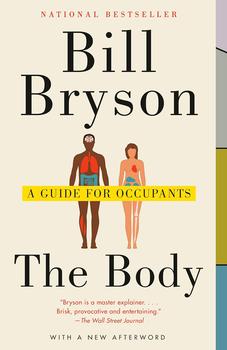Summary | Excerpt | Reviews | Beyond the book | Read-Alikes | Genres & Themes | Author Bio

Adventures on the Alimentary Canal
by Mary RoachThe irresistible, ever-curious, and always best-selling Mary Roach returns with a new adventure to the invisible realm we carry around inside.
"America's funniest science writer" (Washington Post) takes us down the hatch on a unforgettable tour of our insides. The alimentary canal is classic Mary Roach terrain: the questions inspired by our insides are as taboo, in their way, as the cadavers in Stiff and every bit as surreal as the universe of zero gravity explored in Packing for Mars. Why is crunchy food so appealing? Why is it so hard to find names for flavors and smells? Why doesn't the stomach digest itself? How much can you eat before your stomach bursts? Can constipation kill you? Did it kill Elvis? We meet scientists who tackle the questions no one else thinks - or has the courage - to ask. And we go on location to a pet-food taste-test lab, a bacteria transplant, and into a live stomach to observe the fate of a meal.
Like all of Roach's books, Gulp is as much about human beings as it is about human bodies. 15 illustrations
For those who have not read Mary Roach books before, Gulp is a good place to start. In her signature style, she has framed her singular subject with humor, unwavering curiosity, offbeat research and quirky facts. Her dry wit, approachable tone, and careful dollops of academic research make for a book that feels familiar, but also startlingly fresh and innovative...continued
Full Review
(591 words)
This review is available to non-members for a limited time. For full access,
become a member today.
(Reviewed by Elizabeth Whitmore Funk).
Gulp is a book about the digestive system. Describe it this way and your friends are probably unlikely to read it. But if they're aware of the ways Mary Roach approaches her content by incorporating anecdotes, focusing on the unusual details, and including the memorable characters who have peppered her research, the whole experience becomes much more worthwhile.
 The genre of popular science writing lies between academic literature and personal narrative. While Roach's particular brand of quirkiness is unique, a growing number of popular science writers are making the genre accessible to millions of readers. Among the contemporaries are Oliver Sacks, Dr. Atul Gawande and even Bill Bryson, who while more commonly perceived as a travel...
The genre of popular science writing lies between academic literature and personal narrative. While Roach's particular brand of quirkiness is unique, a growing number of popular science writers are making the genre accessible to millions of readers. Among the contemporaries are Oliver Sacks, Dr. Atul Gawande and even Bill Bryson, who while more commonly perceived as a travel...
This "beyond the book" feature is available to non-members for a limited time. Join today for full access.

If you liked Gulp, try these:

The Lady's Handbook for Her Mysterious Illness
by Sarah Ramey
Published 2021
The darkly funny memoir of Sarah Ramey's years-long battle with a mysterious illness that doctors thought was all in her head - but wasn't. A revelation and an inspiration for millions of women whose legitimate health complaints are ignored.

by Bill Bryson
Published 2021
Bill Bryson, bestselling author of A Short History of Nearly Everything, takes us on a head-to-toe tour of the marvel that is the human body. As addictive as it is comprehensive, this is Bryson at his very best, a must-read owner's manual for everybody.